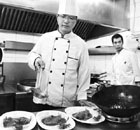Energy
Centrally-administrated SOEs using less energy
(Xinhua)
Updated: 2010-05-11 11:06
 |
Large Medium Small |
BEIJING: The energy intensity of China's centrally-administered State-owned enterprises fell close to government targets from 2005 to 2009, a senior SOE administrator said Monday.
The level of energy consumption per 10,000 yuan of output value was down 15.1 percent over the five-year period, said Li Rongrong, director of the State-owned Assets Supervision and Administration Commission (SASAC).
Combined investment in energy-efficient and emissions reduction projects by centrally-administrated SOEs totaled 87.84 billion yuan ($12.9 billion) in 2009, said Li.
This helped reduce sulfur dioxide emissions per 10,000 yuan of output value by 36.8 percent and chemical oxygen demand by 33 percent compared with 2005 levels, said Li.
| ||||
But he did not explain what would be considered a "poor" performance nor what penalties would be enforced.
Under China's 11th five-year plan (2006-10), the centrally-administered SOEs are expected to reduce energy intensity by 20 percent by the end of 2010 from 2005.
By the end of 2009, China had 131 centrally-administered SOEs, many of them leading companies in highly polluting industries, including petrochemicals, steel, power generation, and non-ferrous metals industries.













